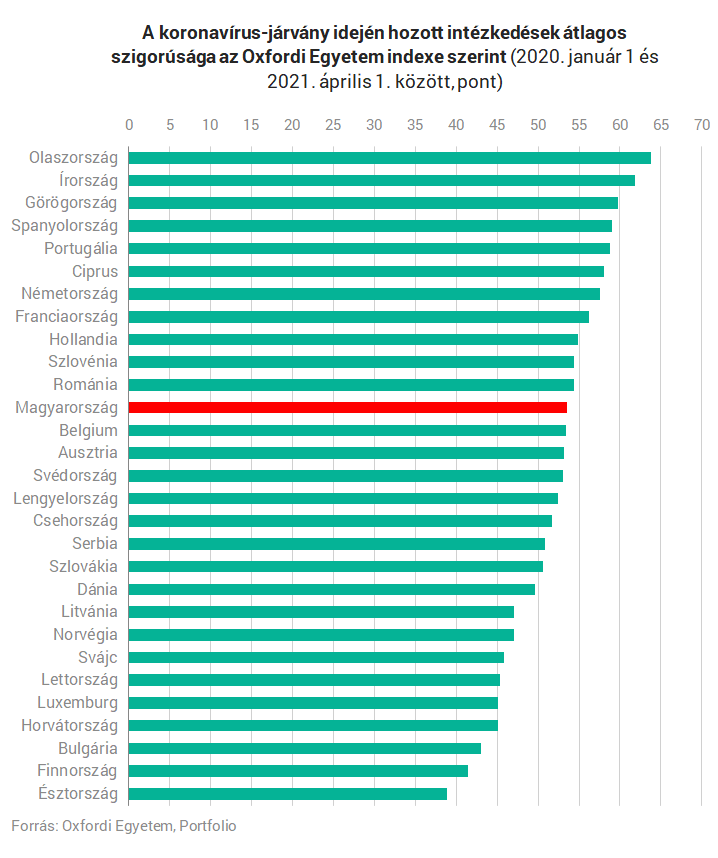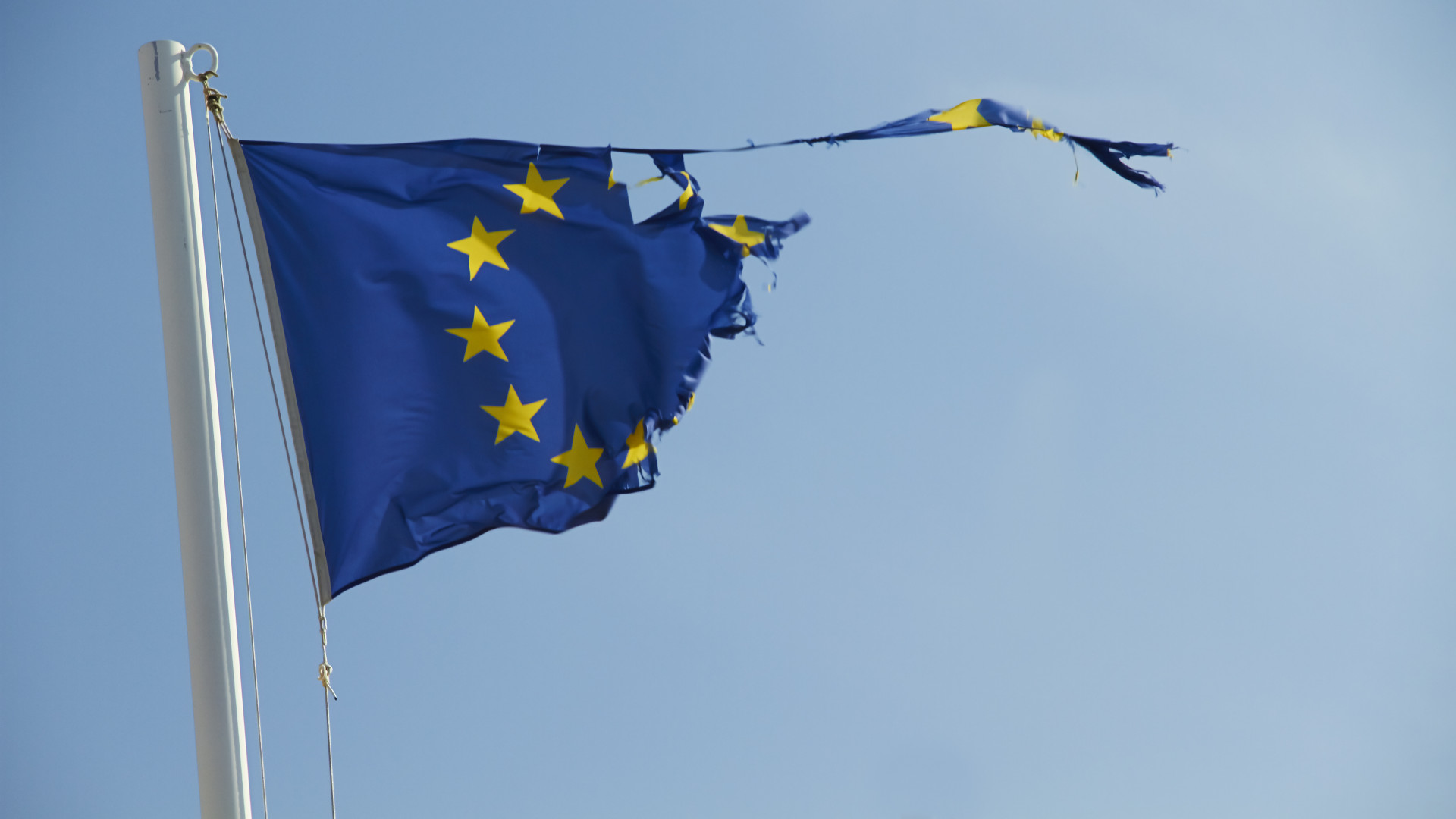It is known that the coronavirus crisis has hit economies, and the epidemic in the spring of 2020 had a particularly profound impact on European countries. Today, in the recovery phase, we often hear that we will see record numbers of GDP growth in the second quarter, although this is only due to a record low in the second quarter of 2020 – and partly adjusted relative production is on the rise.
In the end, the second wave didn’t bring as big a drop as the first (for reasons bWe wrote earlier), in addition to the third wave of this spring, one or another economy (including the Hungarian economy) was able to show very good growth. Interpreting the 2021 growth numbers was difficult for many, as while we have already seen growth in some countries, including Hungary, compared to the previous quarter, compared to the first quarter of 2020, most countries are lagging behind, including Hungary. . If we want to assess the recent economic performance, we have to look at the indicator compared to the previous quarter (because it shows whether production increased or decreased in a particular quarter, and whether progress was made in Hungary, while the annual indicator shows the overall performance for the year, that is, that Legacies of previous quarters “reflect” the assessment of the current situation).
Overall, however, these indicators do not reveal much about the direction countries are heading towards recovery. The annual index comes close to this, but when compared to the first quarter of 2020, the comparison is complicated by the fact that the epidemic was already present in some countries, and in others it has only really spread. Second Quarter. So it is appropriate to compare it to the fourth quarter of 2019. Since this indicator was not published by Eurostat, we now calculate it in the first quarter of 2021, when the epidemic was still abundant in Europe, i.e. countries were far from the pre-crisis level.
One thing can be said at once: the prevailing claim today is that recovery is very uneven in the world, even within Europe.
That’s because there are countries that have already reached pre-crisis levels, some of which will catch up next quarter, and some that may not even be next year. All this difference is quite striking between countries in one economic space – and mostly one currency area – and highlights the weaknesses of the continent.
As can be seen, most countries have not yet reached pre-crisis levels. Five countries are the exception, of which Ireland stands out, which has its own special status We wrote earlier. Among our region, Romania is in the best position, as the Romanian economy has already surpassed the level of emissions seen in the last quarter of 2019. Nordic countries, Finns, Swedes and Danes are not far behind either, they will likely exceed the pre-crisis level in the second quarter, but The same goes for Hungary, where we are already at 98% of the 2019 level.
In contrast, the situation is completely different in the countries of the South. In Italy, which was still experiencing growth problems before the crisis, this lag is 6.4%, which the Italian economy has failed to solve this year. Spain and Portugal are still about 10% behind, and it seems impossible to meet even by 2022 (not to mention additional risks like new waves of epidemics).
What caused the division of the continent?
The above differences are quite striking, but some problems existed even before the crisis. There are significant structural differences between member states, which is why, even before the crisis, we saw significant differences in average annual growth of up to 5%. It is no coincidence that the European Union has linked the use of the €700 billion allocated in the Recovery Fund to structural reforms that can reduce disparities in the long run and bring about more even growth (another question is how well the implementation works).
In addition, there may be several other reasons for a different recovery. One of these reasons is that the crisis caused by the epidemic has affected different sectors in different ways, and therefore, of course, it is the countries that have lost a lot of economic activity that are torn apart by the affected sectors. . It won’t take long to find the sector hit hardest, which is tourism. The sector presents a very diverse picture of each country’s contribution to GDP: while in many countries the sector indirectly (that is, through other sectors such as retail and transportation) accounts for up to a fifth of GDP, in countries the indirect impact is The other 5%. and do not reach.
It would be an oversimplification to say that this alone is the difference in a different pace of recovery, but there is no doubt that the sector has a large role in this.
Are restrictions important?
It is still popular today to think that the extent of the restrictions determines how low each country’s GDP will be (recall then the “transfer dilemma”) last spring and fall, which sought to answer how many cases it would be worth shutting down the economy so that health care did not even reach its maximum capacity thus mitigating the economic downturn). However, the situation is more complicated than this, since an open economy, for example, does not limit its activity in vain, if all the countries around it are closed, its production will automatically and radically decline (hence the structure of the economy of that country, as described above). In the same way, it is not in vain for a country to impose severe restrictions to protect the economy if the population that fears the epidemic is limiting themselves.
Because of the above, we can assume that the severity of restrictions alone may have little effect on the pace of recovery. Of course, we can say with more certainty that the differences between countries with different austerity in recovery can be explained to some extent by different austerity, if the differences are significant, But in general, we cannot talk about drastic differences in the intensity of actions taken by individual states. For comparison, we examined the Oxford Index, which measures the severity of individual government actions. The average severity of the days was from January 1, 2020 to April 1, 2021, and the following order was issued:

Accordingly, the countries in which the epidemic appeared early – Italy, Spain and the south in general, seem to be the most severe. Among the least strict countries are the Nordic countries and the Baltic states, where we can not even talk about a large wave of epidemics (of course, the epidemiological situation also explains its severity – they were practically prevented from appearing due to rapid isolation, and there was no need for great strictness). Interestingly, there are still 14 countries in Europe more stringent than Sweden, which is still favorably referred to as a loose epidemic management country, and Swedish strictness was roughly comparable to that of Hungarian on average in the quarter and last quarter.
It can also be seen that there is no correlation between individual government measures and the extent of the economic downturn. Ireland, for example, was the second most strict country to know about the economic crisis, but we can mention Romania as well. Although such a study does not always yield clear results, the above two data sets were subjected to a correlation study that clearly showed no correlation between the two indicators (the correlation coefficient showed an explanatory correlation of about 0.1). This is also not surprising, because government measures alone do not reveal anything about how much population mobility has decreased – for example, where there were no strict restrictions but the population was more aware and more disciplined, the epidemic was less than there. . , where strict restrictions were widely violated.
other factors
We are far from the end of the line explaining the different recovery speeds – unfortunately we won’t be able to give everything in the article. Mostly because we don’t know everything – there may be a number of factors behind it that we don’t attach importance to at first, or we simply don’t know. However, there are some factors that we believe contributed to the different recovery rates. Some of them are worth mentioning:
- government stimulus packagesThe American example shows how important a fiscal stimulus can be to the economy. Quick and important measures have been taken in all countries of the Union (although far from the size of the United States), but there are still differences in package sizes. In addition to the size, it is important how well the actions are targeted and how effective the state apparatus is in their implementation.
- We’ve already talked about tourism, but there are others Other structural features he is. It doesn’t matter how developed the financial system is, how rich families are, how vulnerable businesses are to crises, and it doesn’t matter what they sell. These factors have to be examined on a country-by-country basis, which will be a time and energy intensive research.
- ….. Important Digitization he is. For example, Nordic countries have facilitated the transition to digital work and remote services, which may have played an important role in the smaller declines of Finns, Swedes, and Norwegians. Nordic countries (mostly Finns) are also exporters of technological products, the demand for which increased during the crisis.
- Maga epidemiological situation It may also have affected economic activity to some extent, regardless of restrictions – with a major epidemic, there may have been a greater reduction in activity and turnover in the service sector than in a country with similar strict measures but less affected by the epidemic. Denmark and Finland are good examples of this.
In addition, we can talk about it cultural factors, Varying degrees social network, a Diversification of foreign trade partners (Exposure to China, for example, is also an important factor), and even blind luck, but there are probably many factors that suffice to see: it is not easy to see exactly why we see such a different pace of recovery among the countries of the continent.
Cover Photo: Getty Images











































